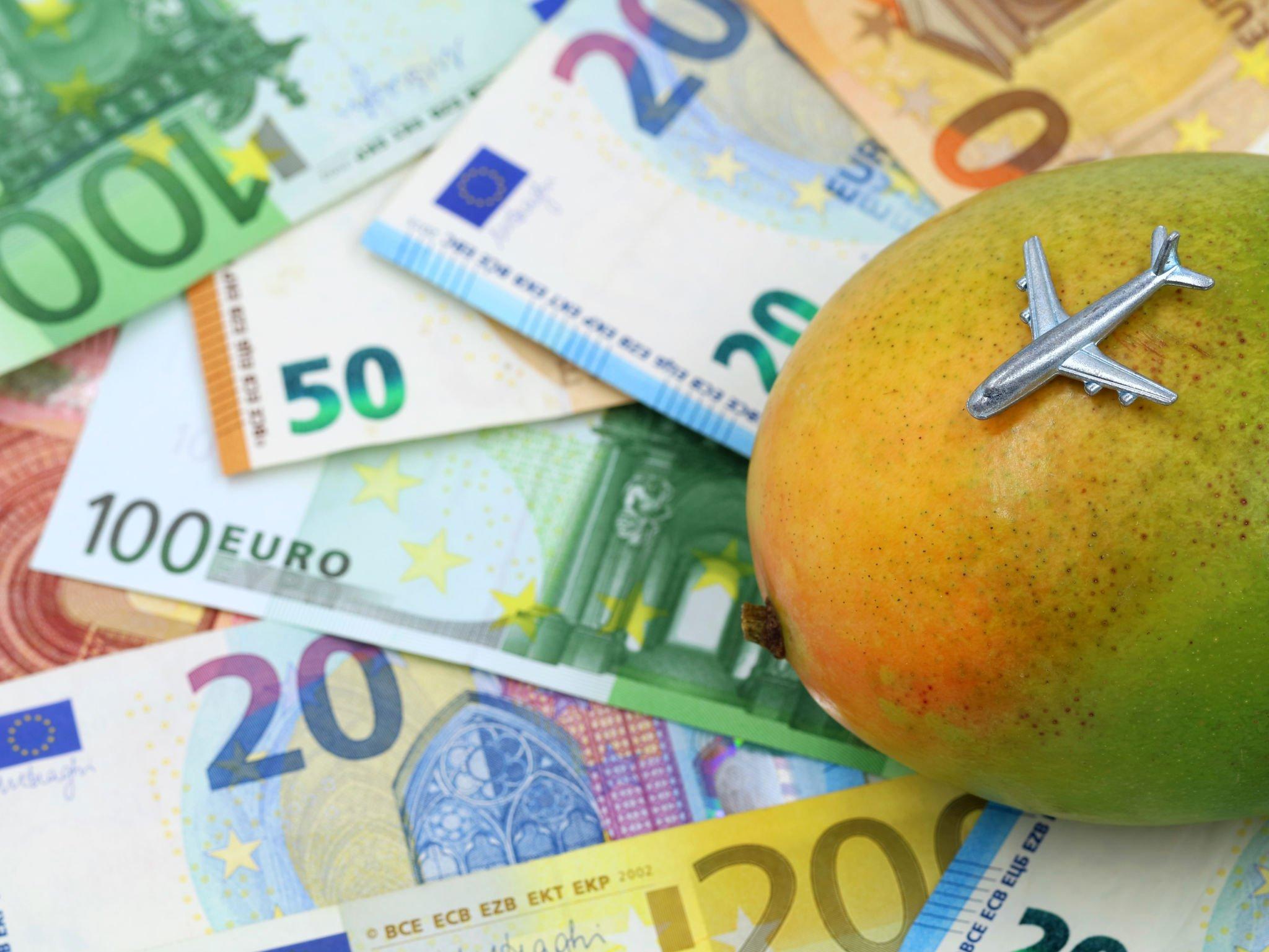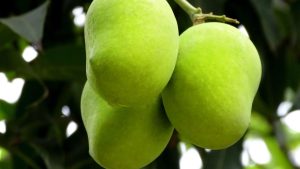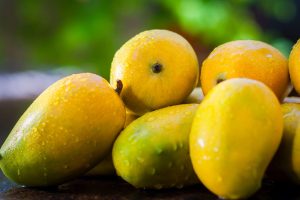
“Insights from experienced exporters to help you conquer the Australian market with your mangoes.”
Introduction
Introduction:
Exporting mangoes to Australia can be a challenging task for many exporters due to strict regulations and quality standards. However, there are successful exporters who have overcome these challenges and have established a profitable business in the Australian market. In this article, we will share some tips from these successful exporters on how to overcome the challenges of exporting mangoes to Australia.
Understanding Australian Import Regulations for Mangoes
Exporting mangoes to Australia can be a lucrative business opportunity for farmers and exporters. However, it is not without its challenges. One of the biggest hurdles that exporters face is complying with Australian import regulations for mangoes. In this article, we will discuss the key regulations that exporters need to be aware of and provide tips from successful exporters on how to overcome these challenges.
Australia has strict regulations in place to protect its agricultural industry from pests and diseases. Mangoes are classified as a high-risk commodity due to the potential for the introduction of fruit flies and other pests. As a result, all mangoes imported into Australia must meet certain requirements.
The first requirement is that mangoes must be sourced from an approved country or region. Currently, only mangoes from the Northern Territory and Western Australia are approved for export to Australia. Mangoes from other countries must undergo a rigorous risk assessment process before they can be approved for import.
The second requirement is that mangoes must be treated to eliminate any pests or diseases. The most common treatment method is irradiation, which involves exposing the fruit to low levels of radiation. This process is safe and does not affect the quality or taste of the fruit.
In addition to these requirements, mangoes must also be accompanied by a phytosanitary certificate issued by the exporting country’s government. This certificate confirms that the mangoes have been inspected and meet all of Australia’s import requirements.
So, how can exporters overcome these challenges and successfully export mangoes to Australia? We spoke to several successful exporters who shared their tips and strategies.
The first tip is to work closely with the Australian government and importers. The Australian government has a dedicated department, the Department of Agriculture, Water and the Environment, that oversees the import of agricultural products. Exporters should reach out to this department early in the process to understand the requirements and ensure that their mangoes meet all of the necessary standards. It is also important to establish a good relationship with importers in Australia, who can provide valuable insights into the market and help navigate the import process.
The second tip is to invest in quality control and traceability systems. Exporters should implement rigorous quality control measures to ensure that their mangoes meet the required standards. This includes monitoring the fruit for pests and diseases, as well as ensuring that the fruit is properly treated and packaged. Additionally, exporters should implement traceability systems that allow them to track the mangoes from the farm to the point of export. This can help to identify any issues that arise and ensure that the fruit is of the highest quality.
The third tip is to focus on building a strong brand and reputation. Australian consumers are increasingly interested in buying high-quality, sustainably produced products. Exporters who can demonstrate that their mangoes are of the highest quality and produced in an environmentally responsible manner are likely to be more successful in the market. This requires investing in marketing and branding efforts that highlight the unique qualities of the mangoes and the care that goes into producing them.
In conclusion, exporting mangoes to Australia can be a challenging but rewarding business opportunity. By understanding the import regulations and implementing the tips and strategies shared by successful exporters, exporters can overcome these challenges and successfully enter the Australian market. With its growing demand for high-quality, sustainably produced products, Australia is a market that is ripe for the picking.
Effective Packaging and Shipping Strategies for Mango Export
Exporting mangoes to Australia can be a lucrative business venture for farmers and exporters. However, it is not without its challenges. One of the biggest hurdles that exporters face is ensuring that the mangoes arrive in Australia in good condition. This requires effective packaging and shipping strategies that can withstand the long journey and the varying weather conditions.
Successful exporters have shared their tips on how to overcome these challenges and ensure that the mangoes arrive in Australia in the best possible condition. Here are some of their strategies:
1. Use high-quality packaging materials
The packaging materials used for mangoes should be of high quality and durable enough to withstand the rigors of transportation. The packaging should also be able to protect the mangoes from damage caused by moisture, heat, and pressure. Some of the commonly used packaging materials for mangoes include corrugated boxes, plastic crates, and foam trays.
2. Ensure proper ventilation
Mangoes are perishable fruits that require proper ventilation during transportation. The packaging should allow for adequate airflow to prevent the buildup of heat and moisture, which can cause the mangoes to spoil. Ventilation can be achieved by using perforated packaging materials or by leaving gaps between the mangoes in the packaging.
3. Use temperature-controlled shipping
Temperature-controlled shipping is essential for ensuring that the mangoes arrive in Australia in good condition. The ideal temperature for transporting mangoes is between 10°C and 13°C. This temperature range helps to slow down the ripening process and prevent the mangoes from becoming overripe or spoiling.
4. Choose the right shipping method
The shipping method used for transporting mangoes to Australia can also affect their quality. Air freight is the preferred method for transporting mangoes as it is faster and allows for better temperature control. However, it is also more expensive than sea freight. Sea freight is a more affordable option but takes longer and may not provide the same level of temperature control as air freight.
5. Work with experienced logistics providers
Working with experienced logistics providers can help ensure that the mangoes arrive in Australia in good condition. These providers have the expertise and resources to handle the packaging, shipping, and customs clearance processes. They can also provide advice on the best packaging materials, shipping methods, and temperature control strategies for mangoes.
In conclusion, effective packaging and shipping strategies are crucial for ensuring that mangoes arrive in Australia in good condition. Using high-quality packaging materials, ensuring proper ventilation, using temperature-controlled shipping, choosing the right shipping method, and working with experienced logistics providers are some of the strategies that successful exporters use to overcome the challenges of exporting mangoes to Australia. By following these tips, farmers and exporters can increase their chances of success in the Australian market and reap the rewards of their hard work.
Building Strong Relationships with Australian Importers
Exporting mangoes to Australia can be a challenging task for many exporters. The Australian market is highly regulated, and the country has strict quarantine laws that must be adhered to. However, with the right approach, it is possible to overcome these challenges and build a successful export business. In this article, we will discuss some tips from successful exporters on how to build strong relationships with Australian importers.
The first step in building a strong relationship with an Australian importer is to understand their needs and requirements. Australian importers are looking for high-quality mangoes that meet their strict standards. They are also looking for reliable suppliers who can deliver their products on time and at a competitive price. To meet these requirements, exporters need to invest in quality control measures and ensure that their products meet Australian standards.
Another important factor in building a strong relationship with an Australian importer is communication. Exporters need to be proactive in communicating with their importers and keeping them informed about their products. This includes providing regular updates on the quality and availability of their mangoes, as well as any changes to their production or shipping schedules.
In addition to communication, exporters also need to be flexible and adaptable. The Australian market is constantly changing, and exporters need to be able to respond quickly to these changes. This may involve adjusting their production schedules, changing their packaging or shipping methods, or even developing new products to meet the needs of the market.
One of the most effective ways to build a strong relationship with an Australian importer is to visit them in person. This allows exporters to meet their importers face-to-face, discuss their products and requirements, and build a personal relationship. It also gives exporters the opportunity to see firsthand how their products are being received in the market and to identify any areas for improvement.
Finally, exporters need to be patient and persistent. Building a successful export business takes time and effort, and there will be setbacks along the way. However, by staying focused on their goals and continuing to work hard, exporters can overcome these challenges and build a successful business in the Australian market.
In conclusion, building strong relationships with Australian importers is essential for exporters looking to succeed in the Australian market. By understanding their needs and requirements, communicating effectively, being flexible and adaptable, visiting them in person, and being patient and persistent, exporters can overcome the challenges of exporting mangoes to Australia and build a successful business. With the right approach, exporting mangoes to Australia can be a profitable and rewarding venture for exporters.
Managing Quality Control and Certification Requirements
Exporting mangoes to Australia can be a lucrative business venture for farmers and exporters. However, it is not without its challenges. One of the biggest hurdles that exporters face is managing quality control and certification requirements. In this article, we will discuss some tips from successful exporters on how to overcome these challenges.
Firstly, it is important to understand the quality control and certification requirements for exporting mangoes to Australia. The Australian government has strict regulations in place to ensure that imported fruits and vegetables do not pose a risk to their agricultural industry. These regulations include requirements for phytosanitary certificates, which certify that the mangoes are free from pests and diseases, and chemical residue testing, which ensures that the mangoes are safe for consumption.
To meet these requirements, exporters must implement a rigorous quality control system. This system should include regular inspections of the mangoes to ensure that they are free from pests and diseases, as well as testing for chemical residues. It is also important to keep detailed records of these inspections and tests, as they may be required by Australian authorities.
One of the key challenges in managing quality control is ensuring that all parties involved in the export process are aware of the requirements and are following them consistently. This includes farmers, packers, and transporters. To overcome this challenge, successful exporters have implemented training programs for all parties involved in the export process. These programs educate them on the regulations and the importance of following them, as well as providing them with the necessary skills and knowledge to implement a quality control system.
Another challenge in managing quality control is ensuring that the mangoes are harvested at the right time and are of the right quality. Mangoes that are harvested too early or too late may not meet the required standards for export. To overcome this challenge, successful exporters have implemented strict harvesting protocols. These protocols specify the optimal time for harvesting, as well as the criteria for selecting mangoes that are suitable for export.
In addition to managing quality control, exporters must also ensure that their mangoes are certified by the relevant authorities. This involves obtaining phytosanitary certificates and meeting the chemical residue testing requirements. To overcome this challenge, successful exporters have established strong relationships with the relevant authorities. They work closely with these authorities to ensure that their mangoes meet the required standards and are certified in a timely manner.
Finally, it is important to note that managing quality control and certification requirements is an ongoing process. Exporters must continually monitor and improve their quality control system to ensure that it is effective and efficient. They must also stay up-to-date with any changes to the regulations and adjust their system accordingly.
In conclusion, managing quality control and certification requirements is a critical aspect of exporting mangoes to Australia. Successful exporters have implemented rigorous quality control systems, established training programs for all parties involved in the export process, implemented strict harvesting protocols, established strong relationships with the relevant authorities, and continually monitor and improve their quality control system. By following these tips, exporters can overcome the challenges of managing quality control and certification requirements and ensure that their mangoes meet the required standards for export to Australia.
Navigating Seasonal and Market Fluctuations in the Australian Mango Industry
Exporting mangoes to Australia can be a lucrative business venture for farmers and exporters. However, it is not without its challenges. One of the biggest hurdles that exporters face is navigating the seasonal and market fluctuations in the Australian mango industry. In this article, we will discuss some tips from successful exporters on how to overcome these challenges.
The Australian mango season typically runs from September to March, with the peak season being from November to January. During this time, the market is flooded with mangoes from local growers, which can make it difficult for exporters to compete. To overcome this challenge, successful exporters recommend focusing on quality over quantity. This means ensuring that the mangoes are of the highest quality and meeting the strict Australian import standards. By providing high-quality mangoes, exporters can differentiate themselves from local growers and attract buyers who are willing to pay a premium price.
Another challenge that exporters face is the fluctuating market demand for mangoes. The demand for mangoes can vary depending on factors such as weather conditions, consumer preferences, and economic conditions. To overcome this challenge, successful exporters recommend diversifying their customer base. This means targeting different market segments such as supermarkets, wholesalers, and foodservice providers. By diversifying their customer base, exporters can reduce their reliance on a single customer and mitigate the risk of market fluctuations.
In addition to diversifying their customer base, successful exporters also recommend building strong relationships with their customers. This means understanding their needs and preferences and providing them with excellent customer service. By building strong relationships with their customers, exporters can increase their chances of repeat business and referrals.
Another challenge that exporters face is the strict import regulations in Australia. The Australian government has strict requirements for the importation of fresh produce, including mangoes. To overcome this challenge, successful exporters recommend working closely with their importers and ensuring that they are compliant with all the regulations. This means providing accurate documentation, adhering to the phytosanitary requirements, and ensuring that the mangoes are free from pests and diseases.
Finally, successful exporters recommend staying up-to-date with the latest market trends and consumer preferences. This means keeping an eye on the latest food trends, such as the demand for organic and sustainably grown produce. By staying up-to-date with the latest market trends, exporters can position themselves as leaders in the industry and attract buyers who are looking for innovative and sustainable products.
In conclusion, exporting mangoes to Australia can be a profitable business venture, but it is not without its challenges. To overcome the challenges of navigating seasonal and market fluctuations in the Australian mango industry, successful exporters recommend focusing on quality over quantity, diversifying their customer base, building strong relationships with their customers, ensuring compliance with import regulations, and staying up-to-date with the latest market trends. By following these tips, exporters can increase their chances of success in the Australian mango market.
Conclusion
Conclusion: Overcoming challenges in exporting mangoes to Australia requires careful planning, attention to detail, and a willingness to adapt to changing market conditions. Successful exporters have found that building strong relationships with buyers, investing in quality control measures, and staying up-to-date on regulatory requirements are key to achieving long-term success in this competitive market. By following these tips and remaining committed to delivering high-quality products, exporters can overcome the challenges of exporting mangoes to Australia and tap into the growing demand for this delicious fruit.




